Unsettling Landscape: Experimental Films by Southeast Asian Women Filmmakers
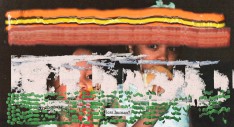
It’s Raining Frogs Outside (Ampangabagat Nin Talakba Ha Likol), by Maria Estela Paiso
UCLA Film & Television Archive and Los Angeles Filmforum present
Unsettling Landscape: Experimental Films by Southeast Asian Women Filmmakers
Saturday, January 27, 2024, 7:30 pm
At the Billy Wilder Theater, Hammer Museum, 10899 Wilshire Blvd., Los Angeles, CA 90024
Full information at https://www.cinema.ucla.edu/events/2024/01/27/unsettling-landscape-experimental-films-southeast-asian-women-filmmakers
Admission is free. No advance reservations. Your seat will be assigned to you when you pick up your ticket at the box office. Seats are assigned on a first come, first served basis. The box office opens one hour before the event.
Q&A via video with filmmakers and UCLA Associate Professor Jasmine Nadua Trice.
Showcasing a collection of recent experimental works by Southeast Asian women filmmakers, Unsettling Landscape focuses on short films and videos that critically engage with questions of land, landscape and the myriad forms of mediation that have been used to capture their image. Like painting and the diorama, the camera has been a tool of colonial authority, historical narrative, and scientific knowledge production, laying the groundwork for unfettered development projects and extractive capitalism. Capturing an image of land through mediation can be an act of complicity, binding it and rendering it legible as scenery, property and territory. Reflexively engaging with such practices of mediation, these works suggest that the moving image also allows space for refusal. Unearthing the deep time of tectonic shifts and Animist belief systems, unraveling statist development narratives and unlearning colonial ways of knowing, these films unsettle the complex relations between lens and land, offering new possibilities for spatial transformation on screen.
Program curated by Associate Professor Jasmine Nadua Trice, UCLA Cinema and Media Studies.
Special thanks to our community partners: Cinema Sala, Echo Park Film Collective, Liyang Network, Los Angeles Filmforum, Visual Communications, Women Under the Influence.
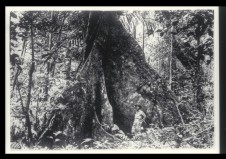
To Pick a Flower Narra tree, Los Banos, Laguna, 1923-1924, courtesy of the Wisconsin Philippines Image Collection
To Pick a Flower
Philippines, 2021, DCP, color, 17 min. Director: Shireen Seno.
Shireen Seno’s 2021 video essay uses images from the American colonial archive to rethink histories of imperial extraction. Tracking these archival traces across the archipelago, the video essay re-scales imperial-capitalist knowledge systems, moving from images of women with houseplants to industrial lumber yards and imperial, botanical classification. The filmmaker’s own voice-over conjures the heady, affective relations between humans and their environments, even in the midst of rationalized industrial conquest.
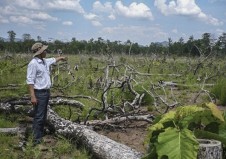
Landscape Series No. 1
Landscape Series No. 1
Vietnam, 2013, DCP, color, 5 min. Director: Nguyễn Trinh Thi.
Filmmaker Nguyễn Trinh Thi describes landscapes as quiet witnesses to history. Moving through a series of still photos culled from a newspaper archive, the video portrays witnesses to newsworthy events framed across a series of landscapes, pointing to the forests and buildings around them: “There.”
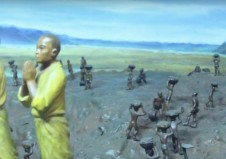
Fiksi
Fiksi
Indonesia, 2016, DCP, color, 12 min. Director: Otty Widasari.
Fiksi (Fiction) presents a subjective view of historical narrative, de-emphasizing legibility and transparency. The film is composed of images of dioramas at Indonesia’s National Museum. Indonesian museums flourished post-independence in the 1950s, with official narratives focused on national unity and armed struggle; rather than presenting artifacts, such narratives were often displayed through scenes in dioramas. If miniatures are already a way of rescaling history, in Otty Widasari’s film, closeups further manipulate the scale of the tiny scenes, fragmenting them.
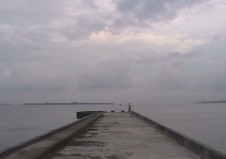
The Harbor (Tepian Laut Utara)
The Harbor (Tepian Laut Utara)
Indonesia, 2010, DCP, color, 18 min. Director: Akumassa.
The Harbor was produced through a collaboration between Akumassa, a program within Jakarta-based film collective Forum Lenteng, and Pasirputih, an organization that grew out of a 2008 Akumassa workshop. Collectively shot in the North Lombok town of Bangsal, a small village that serves the gateway to the Gili Islands. The islands are a major tourism destination, an industry that has caused considerable environmental damage. The collective gaze of area residents captures the incoming boats that facilitate the area’s economies. If touristic images depict the islands’ shorelines as “unspoiled” leisure spaces, The Harbor reveals them as everyday spaces of labor.
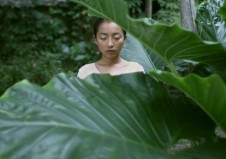
A Million Years
A Million Years
Cambodia, 2018, DCP, color, 21 min. Director: Danech San.
A Million Years is a meditation on the deep time of myth and the natural environment, held in opposition to the time of development and infrastructure. In its narrative and aesthetics, the film presents the collision of multiple spacetimes; the temporal poles it references occur off screen — the dam and the crocodile, modernity and Animism. Photography captures a liminal space between.

It’s Raining Frogs Outside (Ampangabagat Nin Talakba Ha Likol)
It’s Raining Frogs Outside (Ampangabagat Nin Talakba Ha Likol)
Philippines, 2021, DCP, color, 14 min. Director: Maria Estela Paiso.
Maria Estela Paiso’s film is the first short by a woman from the Philippines to play at the Berlin International Film Festival, as well as the first film in the Sambal language of Zambales, the coastal city where the film was made and Paiso’s home. Its cacophony of digital images portrays the inner turmoil of Maya, a young woman whose domestic isolation leads to a monstrous, plastic transformation. Oversaturated landscapes, blossoms, insects and the titular rainfall portray the chaos leading us to the world’s end.
Watch a trailer: https://www.youtube.com/watch?v=87KbkX-5RwE
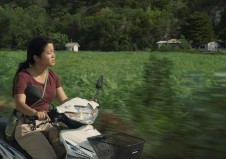
Lemongrass Girl
Lemongrass Girl
Thailand, 2021, DCP, color, 17 min. Director: Pom Bunsermvicha.
A meditative work of docufiction, Pom Bunsermvicha’s film was made on the set of Anocha Suwichakornpong’s feature film, Come Here. A common practice on set, young women in low-level production positions are tasked with burying lemongrass on the location, in order to prevent rainfall that might disrupt the shoot.
Watch a trailer: https://www.youtube.com/watch?v=PRRYDujzb0c
The Line
Thailand, 2020, DCP, color, 17 min. Director: Anocha Suwichakornpong.
Anocha Suwichakornpong’s metacinematic short portrays the making of an experimental film about the Mekong River. A Bangkok artist shares her perception of Animism with gallery visitors, her film-within-a-film portraying colorful, digitally-manipulated images of the riverfront environment. Meanwhile, the mundane, institutional workings of the gallery workplace unfold, presenting a stark contrast.
